- Home
- James Patterson
Postcard killers Page 9
Postcard killers Read online
Page 9
Dessie showed him the photocopy. She saw his eyes open wide and his face go as white as the wal s.
She caught him before he fel.
"Good god," he said. "Are those… are those… people?"
Her reply was needlessly harsh. It just came out that way.
"Not anymore. Look at the way they're positioned. Doesn't it remind you of anything? Where have I seen that before?"
"For heaven's sake," he said, shutting his eyes, shaking his head. "Take it 66 away."
"No," Dessie said. "Take a proper look. Please. Look at the man."
She helped Christer sit down on the floor. He was breathing deeply and had to put his head between his knees for a few seconds.
"Let's see," he said, taking the picture, looking at it for a couple of seconds, then pushing it away again.
"The Dying Dandy," he said. "Nils Dardel, nineteen eighteen. It's in the Museum of Modern Art."
Dessie closed her eyes, seeing the painting before her. Of course! It floated up from her memory. She knew exactly which painting it was.
She leaned over and kissed her ex-husband on the cheek.
"Thank you," she whispered. "This may save lives, Christer."
Chapter 47
Dessie caught her breath as she locked her bicycle outside the entrance to the Museum of Modern Art on the island of Skeppsholmen.
The yel ow building was glowing in the sunlight, making her squint just to look up at it.
She didn't think she'd been here since her divorce from Christer.
She went into the upper entry hal, into an environment similar to her exhusband's gal ery: pristine white, harsh lighting. It looked just as she remembered it, the glass wal s, the espresso bar, the chrome lamps.
She and Christer had been to a party here in the foyer just a few weeks before their marriage came to an end.
She went up to the information desk, staffed by a tal woman in an al black outfit.
"Excuse me," Dessie said. "I'm trying to find a painting cal ed The Dying Dandy."
"Eighty kronor," the woman said.
Of course, the new right-wing government had abolished free entry to Sweden's museums.
Dessie paid.
"You're on the right floor. Just fol ow the corridor to the left as far as you can, then take a right and then the first left again," said the woman in black.
Dessie couldn't remember the reason for the party she had attended with Christer. It was probably someone's birthday, or someone new had managed to get an exhibition at the Modern.
She suppressed the memory and headed off along the long corridor beyond the espresso bar.
The museum was almost empty at this early hour. She could hear people talking from deep within the catacombs but saw no one, not a soul. It wasn't just newspapers but also an appreciation for art that was on the decline, even here in Sweden.
Eventual y she found the right room.
There it was! She recognized it immediately.
TheDying Dandy, oil on canvas, one and a half meters tal, almost two meters across. One of the most famous Swedish paintings of the last century.
Chapter 48
Dessie stopped in front of the painting, oddly moved.
It was an impressive creation, with its sweeping shapes and strong colors: the narcissistic man lies dying on his white cushion, a mirror stil in his hand.
His equal y affected friends are gathered around him. They're mourning, but the only one in tears is the man in the purple jacket and orange shirt up in the left-hand corner.
The woman holding him and the white cushion on her lap looks almost amused.
There was no doubt about it now: this was the model for the murders on Dalaro.
The kil ers must have known the painting. Maybe they'd been here.
Maybe they'd stood exactly where she was standing now, pondering Dardel's work: Was it an al egory about the act of creativity? Or was Dardel holding up a forbidden image of homosexuality?
A thought ran like fire through her brain. She took a deep breath, looking up at the ceiling, then felt the adrenaline kick in.
Up in one corner, right above the door, was a discreet surveil ance camera.
Right now, her image was being captured somewhere.
She took out her mobile and cal ed Gabriel a at police headquarters.
Chapter 49
Dessie was holding up the color reproduction of Dardel's masterpiece in one hand and the photograph from Dalaro in the other.
Her hunch had to be right. Jeez, she was better at this than the police!
Gabriel a's desk was covered with Jacob's postcards and the photographs of the bodies. Beside them were pictures Dessie had printed from the Internet.
Gabriel a looked at the pictures one by one, her eyes opening wider and wider.
"God," she said, picking up the picture of the murdered Germans, "you're right, Dessie."
"Sorry," said Jacob, "but what are you talking about?"
Dessie looked at his unruly mop of hair. He looked like he'd been quite literal y tearing it out. Suddenly she felt so sorry for him, for his pain, his terrible loss.
"The kil ers arrange the bodies to imitate famous works of art," she said.
"Look at this one, Jacob."
Dessie picked up the photograph from Paris. Emily and Clive Spencer's bodies were sitting side by side in bed, both with their right hand over the left resting on their stomachs.
"The Mona Lisa," she said, putting a copy of da Vinci's masterpiece alongside the photograph.
Jacob clumsily grabbed the pictures, crumpling them slightly.
The mysteriously smiling woman on the painting was holding her right hand over her left and resting both on her stomach.
"Christ," he said final y, "you're right. That's what they've been doing."
"Karen and Bil y Cowley," Dessie said.
She put down the picture of the couple murdered in Berlin, showing them in profile, the side with their uninjured eye looking toward the camera.
Beside it she laid a printout of an Egyptian statue.
"The bust of Nefertiti, probably the most imitated work of art from Ancient Egypt. It's in the Neues Museum in Berlin. The kil ers saw it there, I guarantee you."
Gabriel a leaned forward. Her face was flushed, two red marks glowing on her cheeks. Dessie glanced at her. They had been there, too, to the Neues Museum, on their first trip away together.
Jacob picked up the picture and studied it intently.
"What do you mean?" he asked Dessie. "What do their gouged-out left eyes have to do with it?"
"The bust of Nefertiti is missing its left eye," Gabriel a said. "Everyone knows that."
Chapter 50
Dessie wasn't particularly interested in art. Hel, she hadn't recognized the connection to The Dying Dandy. Not at first. But she was fairly knowledgeable about the theory, something she had picked up during her marriage to Christer, probably as a means of self-preservation. She hadn't wanted to come across as an ignorant country girl from Norrland at the various openings. She hadn't exactly felt any real emotion or joy from art, however.
Gabriel a, on the other hand, had a genuine love of art. She'd gotten on very wel with Christer, better than Dessie had actual y. 69 "Amsterdam," Dessie said, picking out a copy of the next painting.
"Vincent van Gogh. Heard of him?"
Jacob looked at her with indulgence.
"I'm an American," he said, "not a barbarian."
"One of his self-portraits," she said. "It usual y belongs in London, but this spring it was on loan to the Van Gogh Museum in Amsterdam. He actual y cut off his left ear, but the kil ers clearly didn't know that, because they cut off -"
"The right ears of their Amsterdam victims," Jacob said breathlessly.
"Hel. What are they up to?"
A silence fel. Jacob drummed his fingers on the table, something he did when he was deep in thought.
Gabriel a looked through the pictures of the bodies and compared th
em to other works of art that Dessie had printed out.
"Florence is Botticel i's Birth of Venus?"
"The Uffizi," Dessie confirmed.
"What about Athens, then? What's Athens meant to be?"
"I don't know that one. But Madrid has to be The Naked Maja by Goya – from the Prado. What do you think, Jacob?"
But Jacob wasn't listening now. He had gone very pale. He was staring vacantly out at the greenery in Kronoberg Park.
"Who was Kimmy?" he asked. "Which work of art is she? What were they imitating?"
Dessie felt her palms sweating. She looked through the printouts and held them out to him.
"The Sistine Chapel," she said softly. "The Creation of Adam is a detail from the ceiling fresco. You know, Michelangelo…"
She held the larger picture, with God lying in front of a human brain and stretching out his hand to Adam, and then a close-up of God's finger almost touching Adam's hand.
Jacob turned to look at Dessie. His eyes were an even brighter blue, radiating a sorrow she couldn't begin to understand.
This is Kimmy's dad, she thought. Not Jacob the policeman, just Jacob the dad.
Instinctively she put her hand on his arm, which was tensed up and very strong.
"But what does this actual y tel us?" Gabriel a said. "That the kil ers are fucked in the head? We already knew that."
Her tone was terse, almost dismissive. Dessie looked at her in surprise.
She removed her hand from Jacob's arm.
"It tel s us more than that," Jacob said, now a policeman again. "It tel s us 70 a lot of things. They're showing off. They're contemptuous. They're demonstrating to us how they have power over life and death. Maybe that death is a form of art that they can use as they please."
Dessie was surprised at the depth of the thought.
Gabriel a's intercom crackled.
"The video from the Museum of Modern Art is at the Bergsgatan reception desk now," a voice said.
Jacob stood up.
"Ask for the recordings from al the museums," he said.
Gabriel a's head jerked.
"Do you realize how many recordings we're talking about? Anyway, they won't have them after such a long time."
But Jacob had already left the room.
Chapter 51
The recordings from the security cameras at the Museum of Modern Art were of relatively good quality. Hopeful y, they would be incriminating.
They were a bit grainy, and the colors were slightly flattened, but the people coming and going were clearly visible in the bright lighting.
The recordings had no sound.
Jacob and Gabriel a had barricaded themselves into a video suite deep in the basement of police headquarters, in the middle of piles of computer disks.
The files weren't in order or marked in any useful way, which meant they had to go through each of them in turn.
"Where to start with this very bad movie?" Gabriel a said, a note of resignation in her voice.
Jacob flipped through the disks, thinking out loud.
"The murders took place on Saturday afternoon. So they must have visited the museum before that."
"If they were ever actual y there," Gabriel a said. "Don't forget that part."
Jacob chose to ignore her negative attitude.
"Saturday morning isn't very likely," he said. "They were probably busy doing other things then."
"Like what?" Gabriel a said.
He looked at her in mild despair.
"Buying champagne and smoking dope with the German couple they would then murder in cold blood."
They divided the recordings between them and started their random viewing.
Chapter 52
Jacob was studying a screen where a group of schoolchildren were wandering aimlessly around the room containing Swedish art at 9:26 on Friday morning. He hit the fast-forward button, and the children suddenly started dashing about like mad things, jumping around the room like midget actors in an old silent movie.
"What do you think of Dessie?" Gabriel a asked out of nowhere without turning away from her screen.
Jacob looked over at her in surprise.
She had also sped up her recording, and had reached Thursday 2:23.
"Pretty smart girl, for a journalist. Why? What do you think of Dessie?"
Gabriel a got to the end of her recording and reached for a new disk from the pile. Friday 3:00 started with three old ladies who seemed more interested in one another than in the art around them.
Gabriel a slowed down her recording to look more careful y at a group of Japanese visitors on a guided tour in front of Dardel's painting.
"She's got a lot of integrity, which makes her seem tougher than she is. It was probably a mistake to force her to write that letter," Gabriel a said.
Jacob glanced over at Gabriel a's screen and watched her hit fast-forward again after the Japanese tourists disappeared.
"Stop! Look at that," Jacob suddenly said.
At 3:27 a young couple came into the room and stood in front of The Dying Dandy. Only their backs were visible.
The woman had long hair, dark but not black. It was hard to judge the exact color because of the quality of the film.
Beside her was a tal, wel -built man with fair hair. The man put his arm around the woman's shoulders. She stroked his back and slipped her fingers under the waistband of his jeans.
Together they went right up to the painting, like they were inspecting it thoroughly.
"Do you think that could be them?" Gabriel a wondered.
Jacob didn't answer.
The couple kept standing there, looking at the painting, speaking only occasional y to each other. They paid no attention to any of the other works in the room.
Gabriel a moved the video forward frame by frame so they didn't miss 72 anything, not a single gesture.
Jacob wished he could hear what they were saying to each other.
The young couple stood in front of the canvas for almost fifteen minutes.
They had their arms around each other the whole time.
Then they abruptly turned to leave the room. The woman kept her head lowered, but just as the man reached the doorway, he threw his hair back.
Suddenly his handsome features were caught in razor-sharp precision by the security camera.
Gabriel a caught her breath.
"It's him!" she said. "That's the guy from the police composite."
Jacob leapt forward and paused the image. His voice was hoarse with excitement.
"I've got you now, you bastard. I've got both of you!"
Chapter 53
Dessie spread her notes and research material out across Gabriel a's desk. She was starting to get excited about the possibility of solving these murders.
There was one aspect of the kil ers' pattern that she'd noticed several times: they were thieves, too. They took cameras, jewelry, electronic gadgets like iPods and mobile phones, credit cards, and other valuables that had one thing in common. They were among the easiest things to get rid of on the black market.
She leaned back in her chair, chewing the hel out of a bal point pen.
If she ignored the murders and the brutal artistic associations, what was left of the Postcard Kil ers?
Wel, a couple of petty thieves.
And how did people like that behave?
She didn't need her research material in front of her to know the answer to that.
They were creatures of habit, just like everyone else, and maybe even more so.
Criminals who concentrated on break-ins, for instance, almost always 73 started in the bedroom. That was where they could usual y find jewelry and cash.
Then they did the study, with its laptops and video cameras.
Then, final y, they went through the living room, with al the expensive but bulky items, like televisions and stereos.
After the crime, the stolen items had to be gotten rid of, and that was where things started to get intere
sting for Dessie.
What usual y happened was that the thieves passed their takings on to a fence, often at a serious discount. That was a price the thieves were wil ing to pay. Having an established channel to get rid of stolen property was worth its weight in gold. It took away the biggest risks.
But what did they do if they didn't have an established channel?
They used pawnbrokers, drug dealers, acquaintances, and even strangers.
So, what channels were open to the Postcard Kil ers in their murderous cavalcade across Europe?
They came completely fresh to each new city, which meant they lacked any form of local network. They couldn't sel to fences or acquaintances, and they would hardly take the risk of trying to sel the stolen property to strangers.
She picked up the phone, cal ed reception, and asked to speak to Mats Duval.
He answered in his office and she made a note of the extension that flashed on the display. It could come in handy one of these days.
"Hel o, yes, sorry, this is Dessie Larsson. I've got a quick question: have you checked the pawnbrokers?"
"The pawnbrokers? Why would we do that? We don't even know what's been stolen."
He hung up on her – the stupid bastard!
Dessie sat with the receiver in her hand.
This time they knew exactly what had been stolen.
Gabriel a had mentioned the brand of watch, and she had even written it down.
Dessie picked up her notepad and read.
An Omega Double Eagle Chronometer in steel and gold with a mother-ofpearl case.
There couldn't have been many of those handed over to Stockholm's pawnbrokers since Saturday afternoon, certainly not one stil in its original packaging.
She went over to Gabriel a's computer, typed "pawnbroker Stockholm" into the yel ow pages, and got eighteen hits.
She picked up the phone and dialed the first number.
"Hel o, my name's Dessie Larsson, and, wel, this is real y embarrassing, 74 but my boyfriend and I pawned my new Omega and a few other bits and pieces on Saturday, and, wel… we'd had a few beers, and now my boyfriend's lost the receipt and I can't remember which shop we went to. I'm so sorry. The watch was an Omega Double Eagle Chronometer. In steel and gold with a mother-of-pearl case…"

 Miracle at Augusta
Miracle at Augusta The Store
The Store The Midnight Club
The Midnight Club The Witnesses
The Witnesses The 9th Judgment
The 9th Judgment Against Medical Advice
Against Medical Advice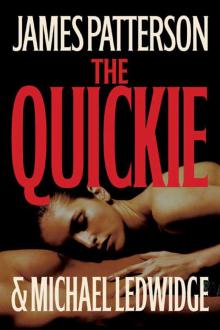 The Quickie
The Quickie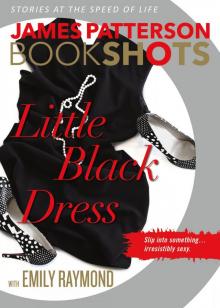 Little Black Dress
Little Black Dress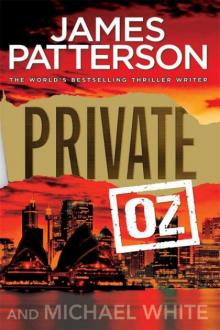 Private Oz
Private Oz Homeroom Diaries
Homeroom Diaries Gone
Gone Lifeguard
Lifeguard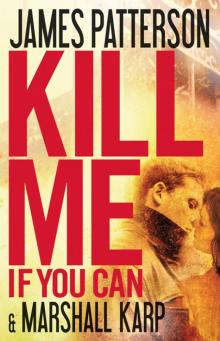 Kill Me if You Can
Kill Me if You Can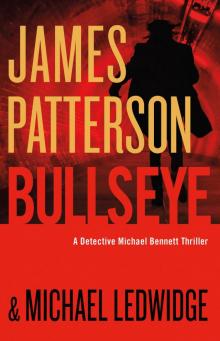 Bullseye
Bullseye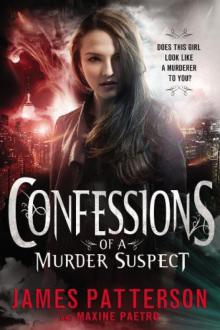 Confessions of a Murder Suspect
Confessions of a Murder Suspect Black Friday
Black Friday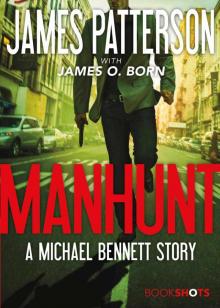 Manhunt
Manhunt Filthy Rich
Filthy Rich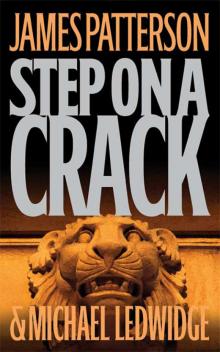 Step on a Crack
Step on a Crack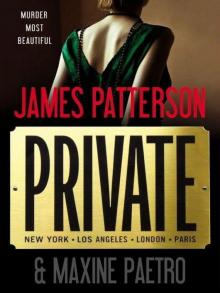 Private
Private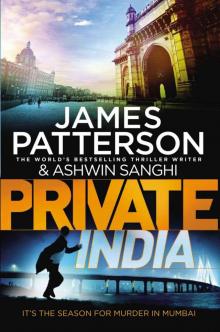 Private India
Private India Game Over
Game Over Private Sydney
Private Sydney The Murder House
The Murder House Mistress
Mistress I, Michael Bennett
I, Michael Bennett The Gift
The Gift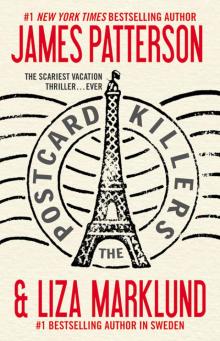 The Postcard Killers
The Postcard Killers The Shut-In
The Shut-In The House Husband
The House Husband The Lost
The Lost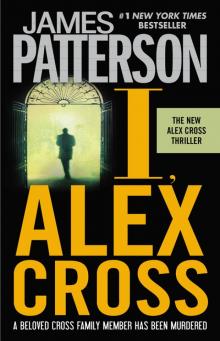 I, Alex Cross
I, Alex Cross Going Bush
Going Bush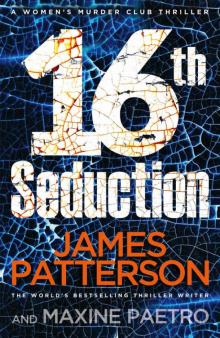 16th Seduction
16th Seduction The Jester
The Jester Along Came a Spider
Along Came a Spider The Lake House
The Lake House Four Blind Mice
Four Blind Mice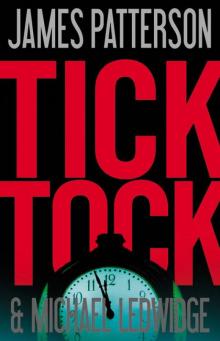 Tick Tock
Tick Tock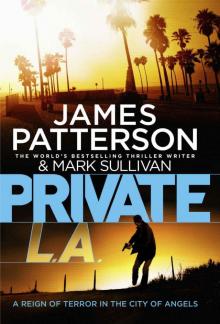 Private L.A.
Private L.A.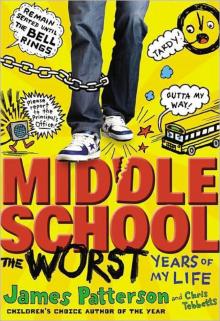 Middle School, the Worst Years of My Life
Middle School, the Worst Years of My Life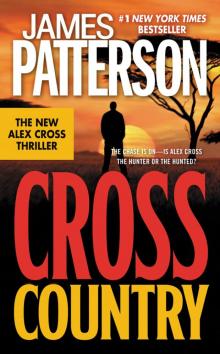 Cross Country
Cross Country The Final Warning
The Final Warning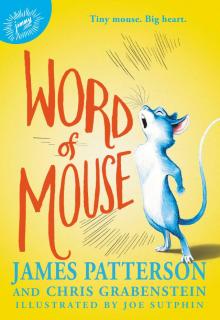 Word of Mouse
Word of Mouse Come and Get Us
Come and Get Us Sail
Sail I Funny TV: A Middle School Story
I Funny TV: A Middle School Story Private London
Private London Save Rafe!
Save Rafe! Swimsuit
Swimsuit Sam's Letters to Jennifer
Sam's Letters to Jennifer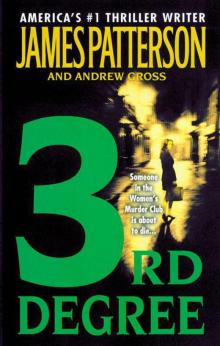 3rd Degree
3rd Degree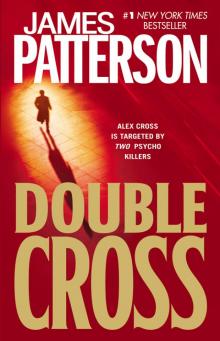 Double Cross
Double Cross Judge & Jury
Judge & Jury Kiss the Girls
Kiss the Girls Second Honeymoon
Second Honeymoon Guilty Wives
Guilty Wives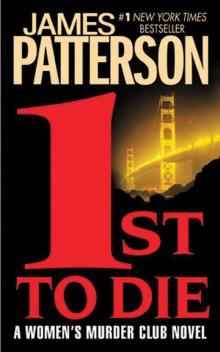 1st to Die
1st to Die NYPD Red 4
NYPD Red 4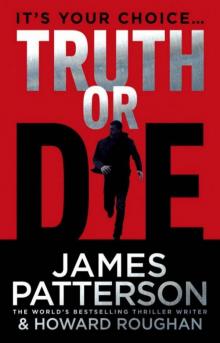 Truth or Die
Truth or Die Private Vegas
Private Vegas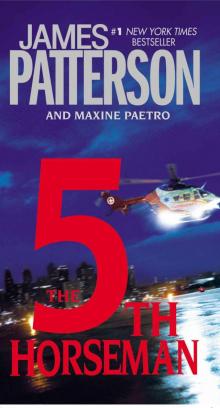 The 5th Horseman
The 5th Horseman 7th Heaven
7th Heaven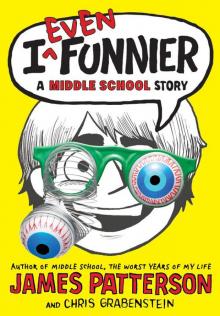 I Even Funnier
I Even Funnier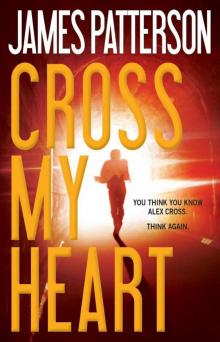 Cross My Heart
Cross My Heart Let’s Play Make-Believe
Let’s Play Make-Believe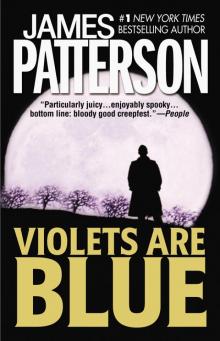 Violets Are Blue
Violets Are Blue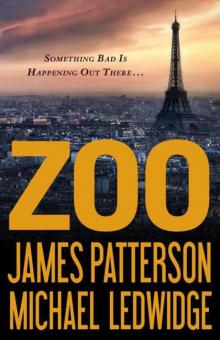 Zoo
Zoo Home Sweet Murder
Home Sweet Murder The Private School Murders
The Private School Murders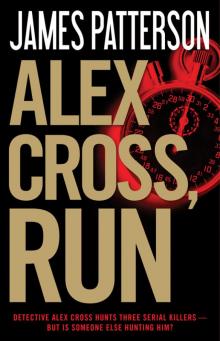 Alex Cross, Run
Alex Cross, Run Hunted: BookShots
Hunted: BookShots The Fire
The Fire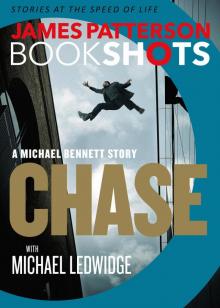 Chase
Chase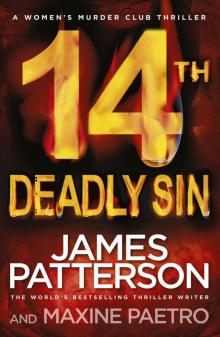 14th Deadly Sin
14th Deadly Sin Bloody Valentine
Bloody Valentine The 17th Suspect
The 17th Suspect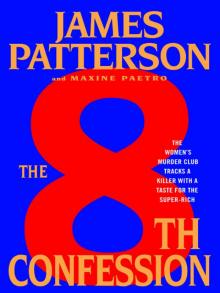 The 8th Confession
The 8th Confession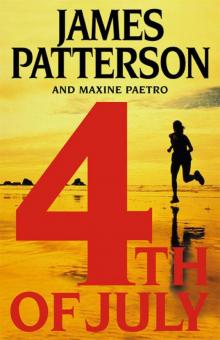 4th of July
4th of July The Angel Experiment
The Angel Experiment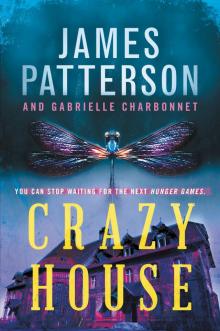 Crazy House
Crazy House School's Out - Forever
School's Out - Forever Suzanne's Diary for Nicholas
Suzanne's Diary for Nicholas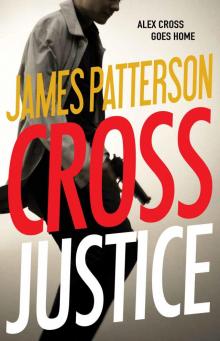 Cross Justice
Cross Justice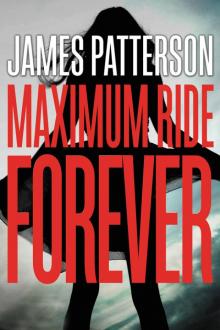 Maximum Ride Forever
Maximum Ride Forever The Thomas Berryman Number
The Thomas Berryman Number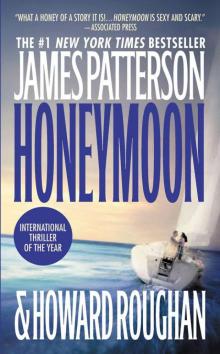 Honeymoon
Honeymoon The Medical Examiner
The Medical Examiner Killer Chef
Killer Chef Private Princess
Private Princess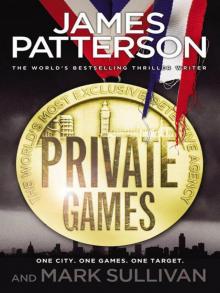 Private Games
Private Games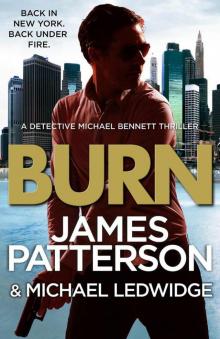 Burn
Burn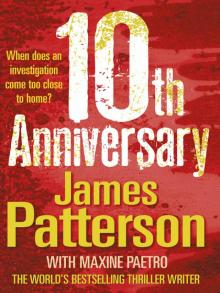 10th Anniversary
10th Anniversary I Totally Funniest: A Middle School Story
I Totally Funniest: A Middle School Story Taking the Titanic
Taking the Titanic The Lawyer Lifeguard
The Lawyer Lifeguard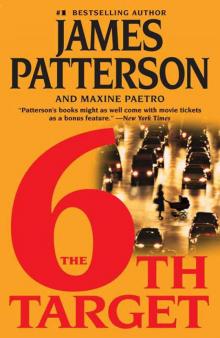 The 6th Target
The 6th Target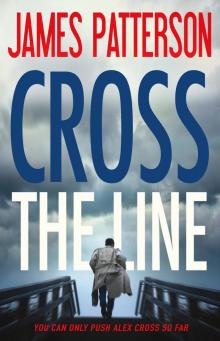 Cross the Line
Cross the Line Alert
Alert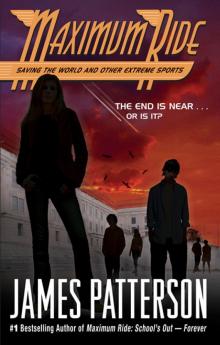 Saving the World and Other Extreme Sports
Saving the World and Other Extreme Sports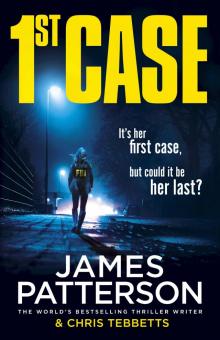 1st Case
1st Case Unlucky 13
Unlucky 13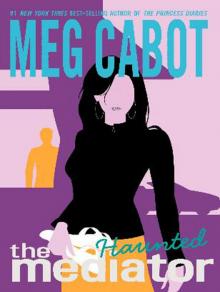 Haunted
Haunted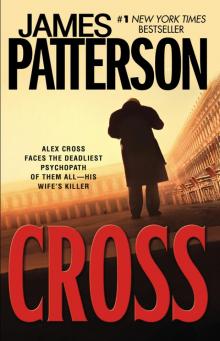 Cross
Cross Lost
Lost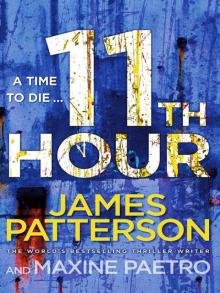 11th Hour
11th Hour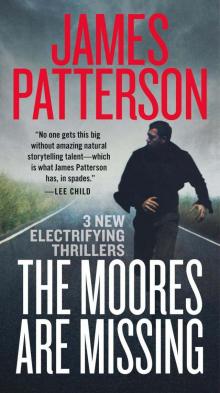 Bookshots Thriller Omnibus
Bookshots Thriller Omnibus Target: Alex Cross
Target: Alex Cross Hope to Die
Hope to Die The Noise
The Noise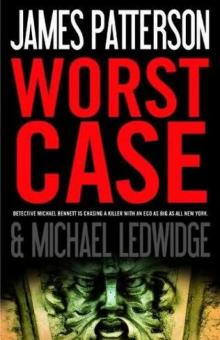 Worst Case
Worst Case Dog's Best Friend
Dog's Best Friend Nevermore: The Final Maximum Ride Adventure
Nevermore: The Final Maximum Ride Adventure I Funny: A Middle School Story
I Funny: A Middle School Story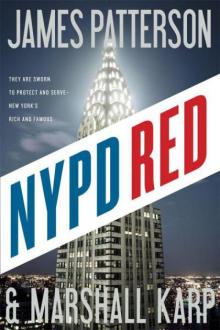 NYPD Red
NYPD Red Till Murder Do Us Part
Till Murder Do Us Part Black & Blue
Black & Blue Fang
Fang Liar Liar
Liar Liar The Inn
The Inn Sundays at Tiffany's
Sundays at Tiffany's Middle School: Escape to Australia
Middle School: Escape to Australia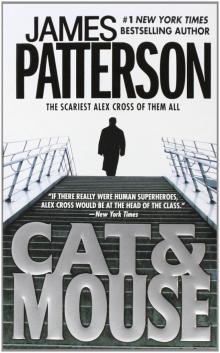 Cat and Mouse
Cat and Mouse Instinct
Instinct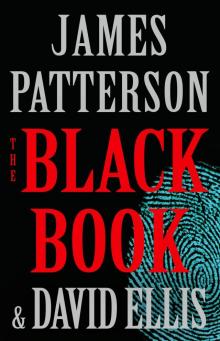 The Black Book
The Black Book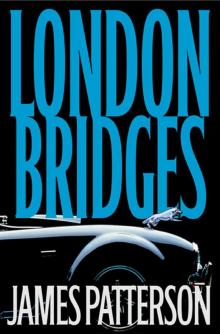 London Bridges
London Bridges Toys
Toys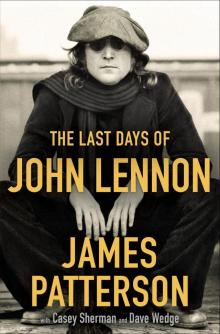 The Last Days of John Lennon
The Last Days of John Lennon Roses Are Red
Roses Are Red Witch & Wizard
Witch & Wizard The Dolls
The Dolls The Christmas Wedding
The Christmas Wedding The River Murders
The River Murders The 18th Abduction
The 18th Abduction The 19th Christmas
The 19th Christmas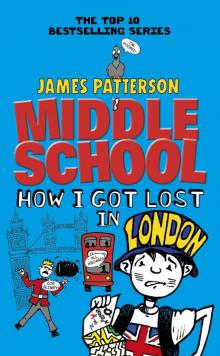 Middle School: How I Got Lost in London
Middle School: How I Got Lost in London Just My Rotten Luck
Just My Rotten Luck Red Alert
Red Alert Walk in My Combat Boots
Walk in My Combat Boots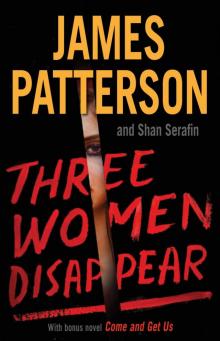 Three Women Disappear
Three Women Disappear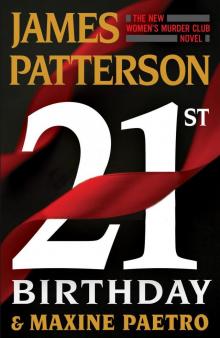 21st Birthday
21st Birthday All-American Adventure
All-American Adventure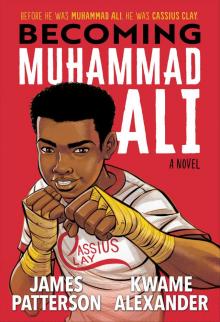 Becoming Muhammad Ali
Becoming Muhammad Ali The Murder of an Angel
The Murder of an Angel The 13-Minute Murder
The 13-Minute Murder Rebels With a Cause
Rebels With a Cause The Trial
The Trial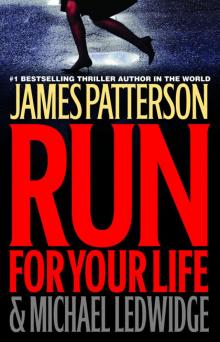 Run for Your Life
Run for Your Life The House Next Door
The House Next Door NYPD Red 2
NYPD Red 2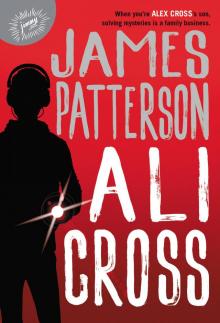 Ali Cross
Ali Cross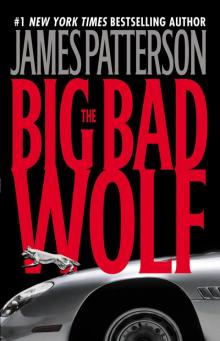 The Big Bad Wolf
The Big Bad Wolf Middle School: My Brother Is a Big, Fat Liar
Middle School: My Brother Is a Big, Fat Liar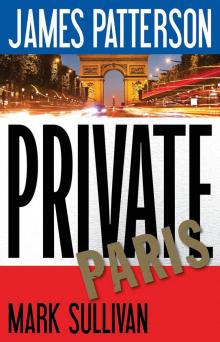 Private Paris
Private Paris Miracle on the 17th Green
Miracle on the 17th Green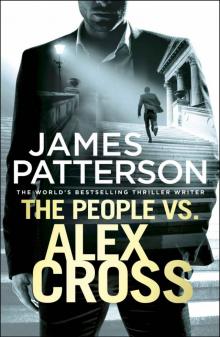 The People vs. Alex Cross
The People vs. Alex Cross The Beach House
The Beach House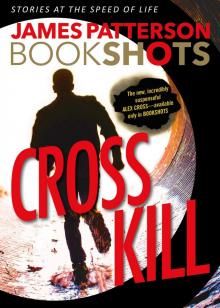 Cross Kill
Cross Kill Dog Diaries
Dog Diaries The President's Daughter
The President's Daughter Happy Howlidays
Happy Howlidays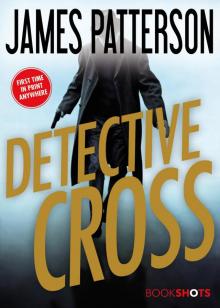 Detective Cross
Detective Cross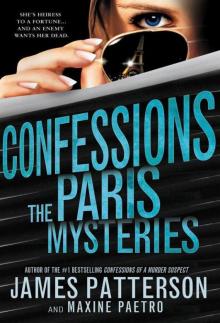 The Paris Mysteries
The Paris Mysteries Watch the Skies
Watch the Skies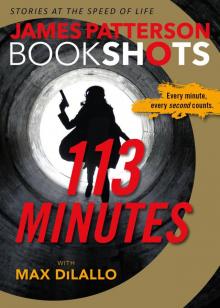 113 Minutes
113 Minutes Alex Cross's Trial
Alex Cross's Trial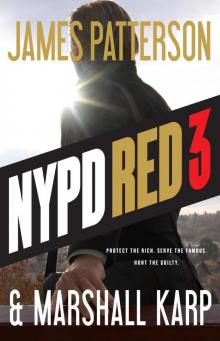 NYPD Red 3
NYPD Red 3 Hush Hush
Hush Hush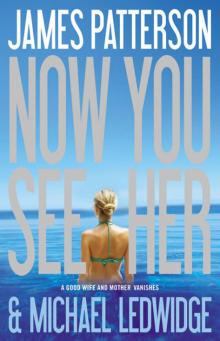 Now You See Her
Now You See Her Merry Christmas, Alex Cross
Merry Christmas, Alex Cross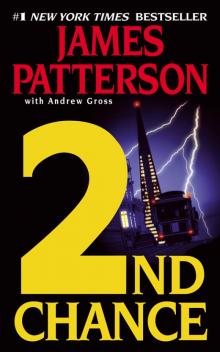 2nd Chance
2nd Chance Private Royals
Private Royals Two From the Heart
Two From the Heart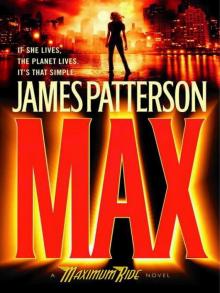 Max
Max I, Funny
I, Funny Blindside (Michael Bennett)
Blindside (Michael Bennett) Sophia, Princess Among Beasts
Sophia, Princess Among Beasts Armageddon
Armageddon Don't Blink
Don't Blink NYPD Red 6
NYPD Red 6 The First Lady
The First Lady Texas Outlaw
Texas Outlaw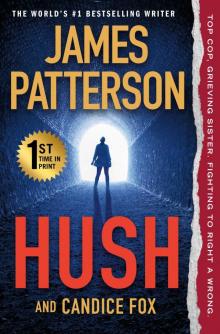 Hush
Hush Beach Road
Beach Road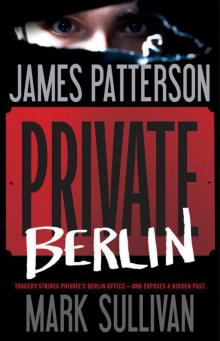 Private Berlin
Private Berlin The Family Lawyer
The Family Lawyer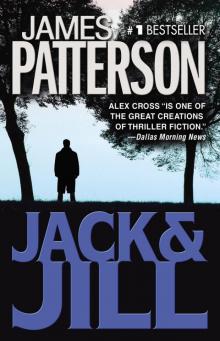 Jack & Jill
Jack & Jill The Midwife Murders
The Midwife Murders Middle School: Rafe's Aussie Adventure
Middle School: Rafe's Aussie Adventure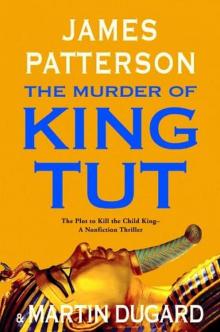 The Murder of King Tut: The Plot to Kill the Child King
The Murder of King Tut: The Plot to Kill the Child King First Love
First Love The Dangerous Days of Daniel X
The Dangerous Days of Daniel X Hawk
Hawk Private Delhi
Private Delhi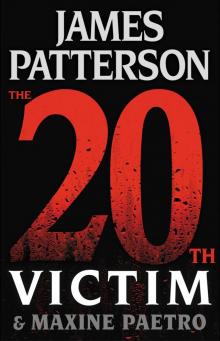 The 20th Victim
The 20th Victim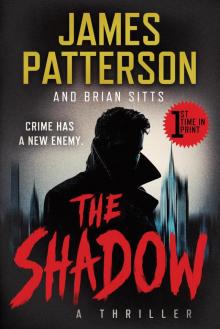 The Shadow
The Shadow Katt vs. Dogg
Katt vs. Dogg The Palm Beach Murders
The Palm Beach Murders 2 Sisters Detective Agency
2 Sisters Detective Agency Humans, Bow Down
Humans, Bow Down You've Been Warned
You've Been Warned Cradle and All
Cradle and All 20th Victim: (Women’s Murder Club 20) (Women's Murder Club)
20th Victim: (Women’s Murder Club 20) (Women's Murder Club)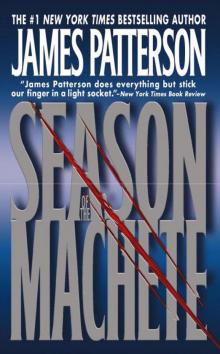 Season of the Machete
Season of the Machete Woman of God
Woman of God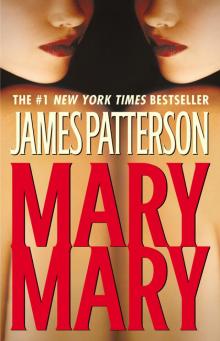 Mary, Mary
Mary, Mary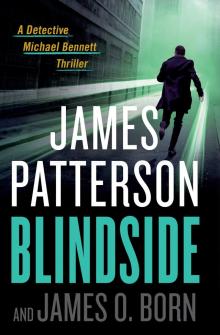 Blindside
Blindside Invisible
Invisible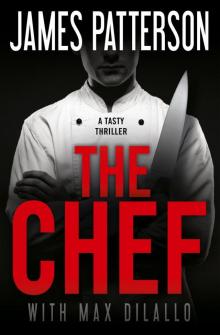 The Chef
The Chef Revenge
Revenge See How They Run
See How They Run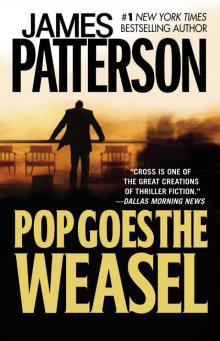 Pop Goes the Weasel
Pop Goes the Weasel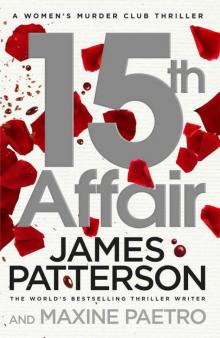 15th Affair
15th Affair Middle School: Get Me Out of Here!
Middle School: Get Me Out of Here! Middle School: How I Survived Bullies, Broccoli, and Snake Hill
Middle School: How I Survived Bullies, Broccoli, and Snake Hill From Hero to Zero - Chris Tebbetts
From Hero to Zero - Chris Tebbetts G'day, America
G'day, America Max Einstein Saves the Future
Max Einstein Saves the Future The Cornwalls Are Gone
The Cornwalls Are Gone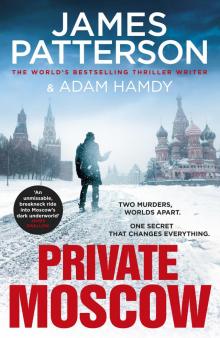 Private Moscow
Private Moscow Two Schools Out - Forever
Two Schools Out - Forever Hollywood 101
Hollywood 101 Deadly Cargo: BookShots
Deadly Cargo: BookShots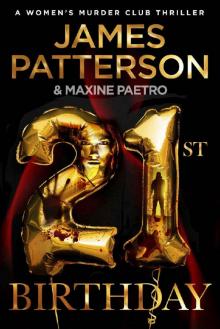 21st Birthday (Women's Murder Club)
21st Birthday (Women's Murder Club) The Sky Is Falling
The Sky Is Falling Cajun Justice
Cajun Justice Bennett 06 - Gone
Bennett 06 - Gone The House of Kennedy
The House of Kennedy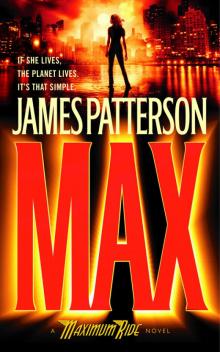 Waterwings
Waterwings Murder is Forever, Volume 2
Murder is Forever, Volume 2 Maximum Ride 02
Maximum Ride 02 Treasure Hunters--The Plunder Down Under
Treasure Hunters--The Plunder Down Under Private Royals: BookShots (A Private Thriller)
Private Royals: BookShots (A Private Thriller) After the End
After the End Private India: (Private 8)
Private India: (Private 8) Escape to Australia
Escape to Australia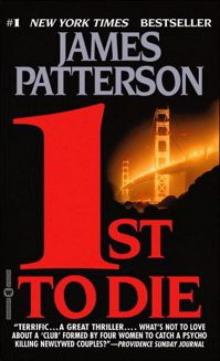 WMC - First to Die
WMC - First to Die Boys Will Be Boys
Boys Will Be Boys The Red Book
The Red Book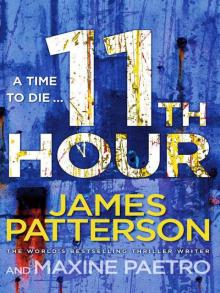 11th hour wmc-11
11th hour wmc-11 Hidden
Hidden You've Been Warned--Again
You've Been Warned--Again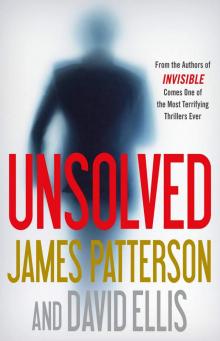 Unsolved
Unsolved Pottymouth and Stoopid
Pottymouth and Stoopid Hope to Die: (Alex Cross 22)
Hope to Die: (Alex Cross 22) The Moores Are Missing
The Moores Are Missing Black & Blue: BookShots (Detective Harriet Blue Series)
Black & Blue: BookShots (Detective Harriet Blue Series) Airport - Code Red: BookShots
Airport - Code Red: BookShots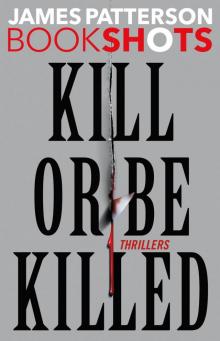 Kill or Be Killed
Kill or Be Killed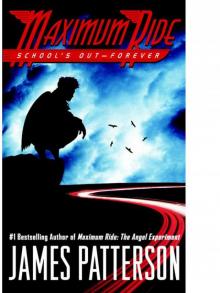 School's Out--Forever
School's Out--Forever When the Wind Blows
When the Wind Blows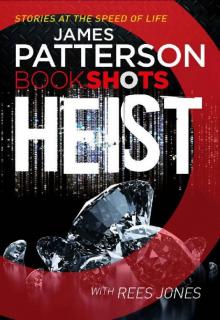 Heist: BookShots
Heist: BookShots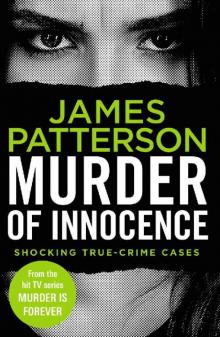 Murder of Innocence (Murder Is Forever)
Murder of Innocence (Murder Is Forever) Red Alert_An NYPD Red Mystery
Red Alert_An NYPD Red Mystery Malicious
Malicious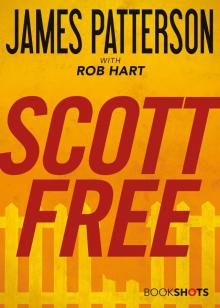 Scott Free
Scott Free The Summer House
The Summer House French Kiss
French Kiss Treasure Hunters
Treasure Hunters Murder Is Forever, Volume 1
Murder Is Forever, Volume 1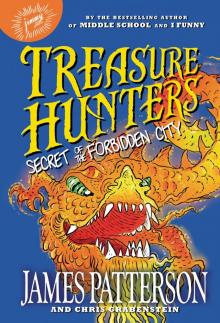 Secret of the Forbidden City
Secret of the Forbidden City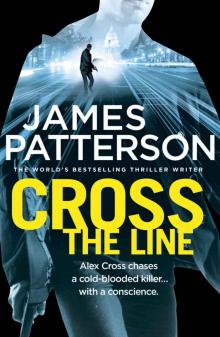 Cross the Line: (Alex Cross 24)
Cross the Line: (Alex Cross 24) Witch & Wizard: The Fire
Witch & Wizard: The Fire![Women's Murder Club [06] The 6th Target Read online](http://i1.bookreadfree.com/i/03/24/womens_murder_club_06_the_6th_target_preview.jpg) Women's Murder Club [06] The 6th Target
Women's Murder Club [06] The 6th Target Cross My Heart ac-21
Cross My Heart ac-21 Alex Cross’s Trial ак-15
Alex Cross’s Trial ак-15 Alex Cross 03 - Jack & Jill
Alex Cross 03 - Jack & Jill Liar Liar: (Harriet Blue 3) (Detective Harriet Blue Series)
Liar Liar: (Harriet Blue 3) (Detective Harriet Blue Series) Cross Country ак-14
Cross Country ак-14 Honeymoon h-1
Honeymoon h-1 Maximum Ride: The Angel Experiment
Maximum Ride: The Angel Experiment The Big Bad Wolf ак-9
The Big Bad Wolf ак-9 Dead Heat: BookShots (Book Shots)
Dead Heat: BookShots (Book Shots) Kill and Tell
Kill and Tell Avalanche
Avalanche Robot Revolution
Robot Revolution Public School Superhero
Public School Superhero 12th of Never
12th of Never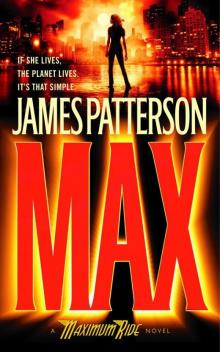 Max: A Maximum Ride Novel
Max: A Maximum Ride Novel All-American Murder
All-American Murder Murder Games
Murder Games Robots Go Wild!
Robots Go Wild!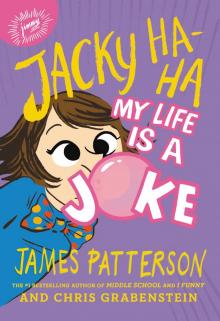 My Life Is a Joke
My Life Is a Joke Private: Gold
Private: Gold Demons and Druids
Demons and Druids Jacky Ha-Ha
Jacky Ha-Ha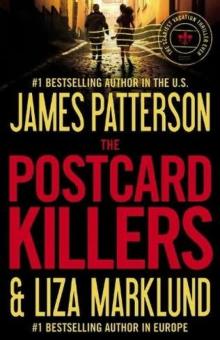 Postcard killers
Postcard killers Princess: A Private Novel
Princess: A Private Novel Kill Alex Cross ac-18
Kill Alex Cross ac-18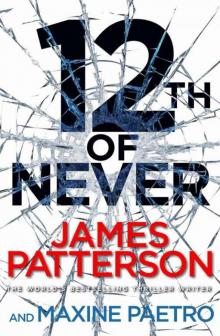 12th of Never wmc-12
12th of Never wmc-12 The Murder of King Tut
The Murder of King Tut I Totally Funniest
I Totally Funniest Cross Fire ак-17
Cross Fire ак-17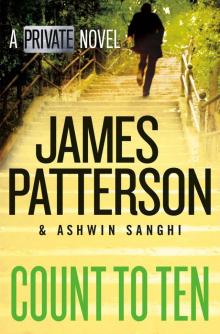 Count to Ten
Count to Ten![Women's Murder Club [10] 10th Anniversary Read online](http://i1.bookreadfree.com/i1/03/30/womens_murder_club_10_10th_anniversary_preview.jpg) Women's Murder Club [10] 10th Anniversary
Women's Murder Club [10] 10th Anniversary![Women's Murder Club [01] 1st to Die Read online](http://i1.bookreadfree.com/i1/03/31/womens_murder_club_01_1st_to_die_preview.jpg) Women's Murder Club [01] 1st to Die
Women's Murder Club [01] 1st to Die I, Michael Bennett mb-5
I, Michael Bennett mb-5 Nooners
Nooners![Women's Murder Club [08] The 8th Confession Read online](http://i1.bookreadfree.com/i1/04/03/womens_murder_club_08_the_8th_confession_preview.jpg) Women's Murder Club [08] The 8th Confession
Women's Murder Club [08] The 8th Confession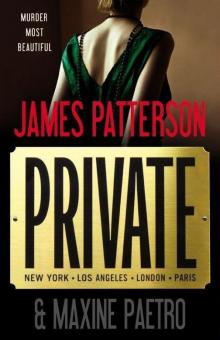 Private jm-1
Private jm-1 Treasure Hunters: Danger Down the Nile
Treasure Hunters: Danger Down the Nile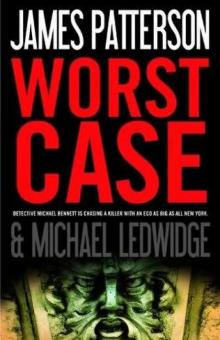 Worst Case mb-3
Worst Case mb-3 Don’t Blink
Don’t Blink The Games
The Games The Medical Examiner: A Women's Murder Club Story
The Medical Examiner: A Women's Murder Club Story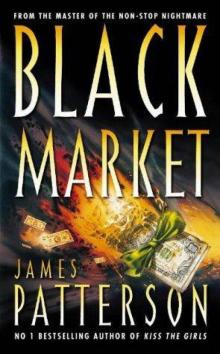 Black Market
Black Market Gone mb-6
Gone mb-6![Women's Murder Club [02] 2nd Chance Read online](http://i1.bookreadfree.com/i1/04/04/womens_murder_club_02_2nd_chance_preview.jpg) Women's Murder Club [02] 2nd Chance
Women's Murder Club [02] 2nd Chance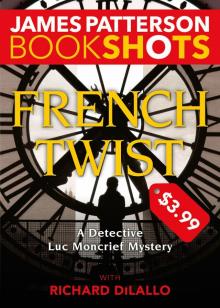 French Twist
French Twist Kenny Wright
Kenny Wright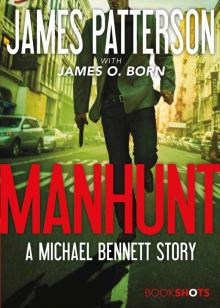 Manhunt: A Michael Bennett Story
Manhunt: A Michael Bennett Story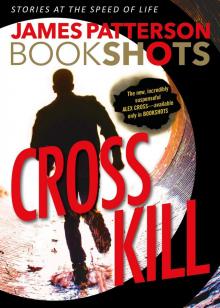 Cross Kill: An Alex Cross Story
Cross Kill: An Alex Cross Story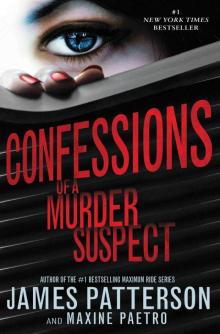 Confessions of a Murder Suspect td-1
Confessions of a Murder Suspect td-1 Second Honeymoon h-2
Second Honeymoon h-2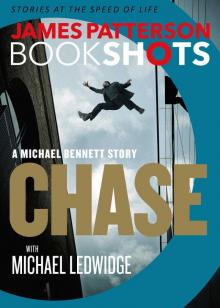 Chase_A BookShot_A Michael Bennett Story
Chase_A BookShot_A Michael Bennett Story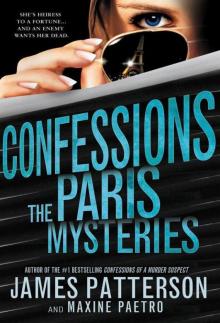 Confessions: The Paris Mysteries
Confessions: The Paris Mysteries![Women's Murder Club [09] The 9th Judgment Read online](http://i1.bookreadfree.com/i2/04/08/womens_murder_club_09_the_9th_judgment_preview.jpg) Women's Murder Club [09] The 9th Judgment
Women's Murder Club [09] The 9th Judgment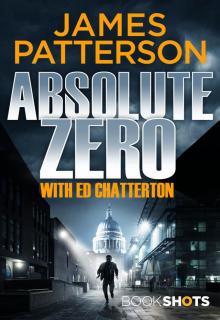 Absolute Zero
Absolute Zero Nevermore: The Final Maximum Ride Adventure mr-8
Nevermore: The Final Maximum Ride Adventure mr-8 Angel: A Maximum Ride Novel mr-7
Angel: A Maximum Ride Novel mr-7 Juror #3
Juror #3 Million-Dollar Mess Down Under
Million-Dollar Mess Down Under The Verdict: BookShots (A Jon Roscoe Thriller)
The Verdict: BookShots (A Jon Roscoe Thriller) The President Is Missing: A Novel
The President Is Missing: A Novel![Women's Murder Club [04] 4th of July Read online](http://i1.bookreadfree.com/i2/04/06/womens_murder_club_04_4th_of_july_preview.jpg) Women's Murder Club [04] 4th of July
Women's Murder Club [04] 4th of July The Hostage: BookShots (Hotel Series)
The Hostage: BookShots (Hotel Series) $10,000,000 Marriage Proposal
$10,000,000 Marriage Proposal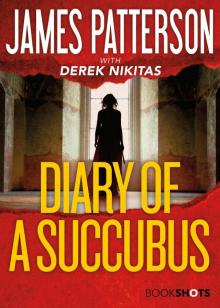 Diary of a Succubus
Diary of a Succubus Unbelievably Boring Bart
Unbelievably Boring Bart Angel: A Maximum Ride Novel
Angel: A Maximum Ride Novel Stingrays
Stingrays Confessions: The Private School Murders
Confessions: The Private School Murders Stealing Gulfstreams
Stealing Gulfstreams![Women's Murder Club [05] The 5th Horseman Read online](http://i1.bookreadfree.com/i2/04/05/womens_murder_club_05_the_5th_horseman_preview.jpg) Women's Murder Club [05] The 5th Horseman
Women's Murder Club [05] The 5th Horseman Zoo 2
Zoo 2 Jack Morgan 02 - Private London
Jack Morgan 02 - Private London Treasure Hunters--Quest for the City of Gold
Treasure Hunters--Quest for the City of Gold The Christmas Mystery
The Christmas Mystery Murder in Paradise
Murder in Paradise Kidnapped: BookShots (A Jon Roscoe Thriller)
Kidnapped: BookShots (A Jon Roscoe Thriller) Triple Homicide_Thrillers
Triple Homicide_Thrillers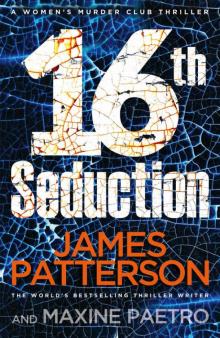 16th Seduction: (Women’s Murder Club 16) (Women's Murder Club)
16th Seduction: (Women’s Murder Club 16) (Women's Murder Club)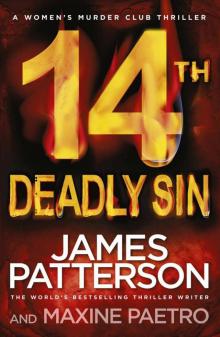 14th Deadly Sin: (Women’s Murder Club 14)
14th Deadly Sin: (Women’s Murder Club 14) Texas Ranger
Texas Ranger Witch & Wizard 04 - The Kiss
Witch & Wizard 04 - The Kiss![Women's Murder Club [03] 3rd Degree Read online](http://i1.bookreadfree.com/i2/04/12/womens_murder_club_03_3rd_degree_preview.jpg) Women's Murder Club [03] 3rd Degree
Women's Murder Club [03] 3rd Degree Break Point: BookShots
Break Point: BookShots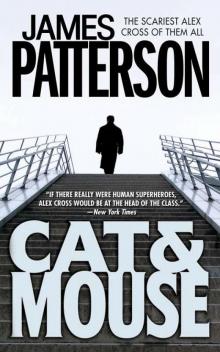 Alex Cross 04 - Cat & Mouse
Alex Cross 04 - Cat & Mouse Maximum Ride
Maximum Ride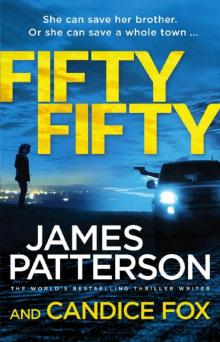 Fifty Fifty: (Harriet Blue 2) (Detective Harriet Blue Series)
Fifty Fifty: (Harriet Blue 2) (Detective Harriet Blue Series) Alex Cross 02 - Kiss the Girls
Alex Cross 02 - Kiss the Girls The President Is Missing
The President Is Missing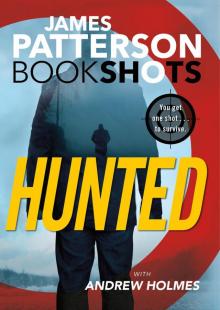 Hunted
Hunted House of Robots
House of Robots Dangerous Days of Daniel X
Dangerous Days of Daniel X Tick Tock mb-4
Tick Tock mb-4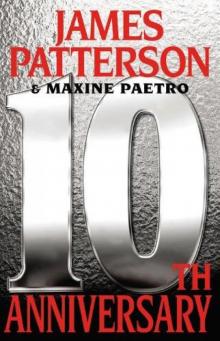 10th Anniversary wmc-10
10th Anniversary wmc-10 The Exile
The Exile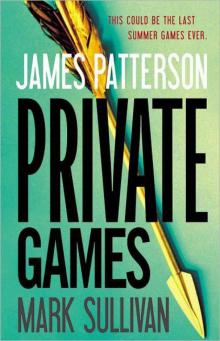 Private Games-Jack Morgan 4 jm-4
Private Games-Jack Morgan 4 jm-4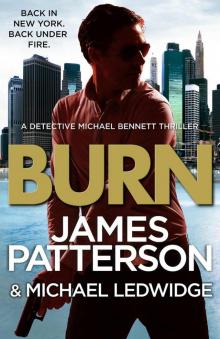 Burn: (Michael Bennett 7)
Burn: (Michael Bennett 7) Laugh Out Loud
Laugh Out Loud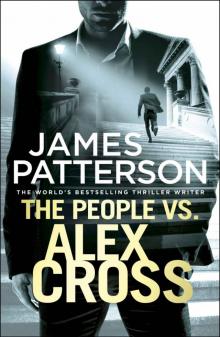 The People vs. Alex Cross: (Alex Cross 25)
The People vs. Alex Cross: (Alex Cross 25) Peril at the Top of the World
Peril at the Top of the World I Funny TV
I Funny TV Merry Christmas, Alex Cross ac-19
Merry Christmas, Alex Cross ac-19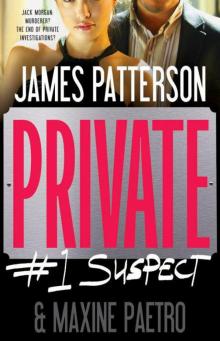 #1 Suspect jm-3
#1 Suspect jm-3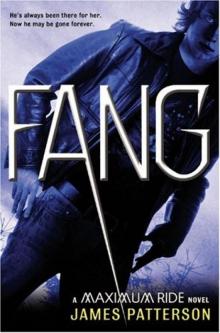 Fang: A Maximum Ride Novel
Fang: A Maximum Ride Novel![Women's Murder Club [07] 7th Heaven Read online](http://i1.bookreadfree.com/i2/04/13/womens_murder_club_07_7th_heaven_preview.jpg) Women's Murder Club [07] 7th Heaven
Women's Murder Club [07] 7th Heaven The End
The End